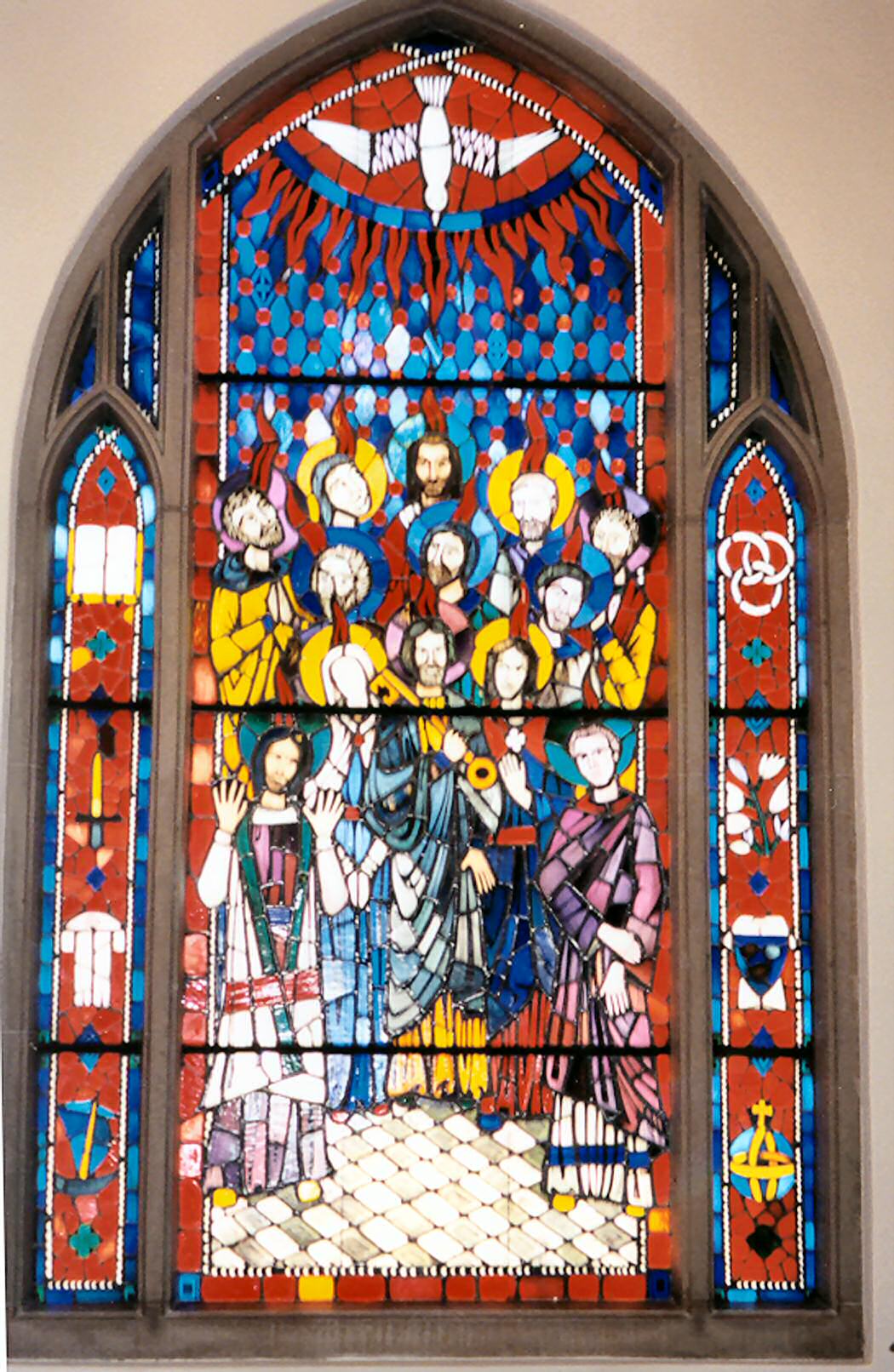Architecture
Scroll down to learn more about our stained glass windows and pipe organ
Grace Lutheran is the "mother church" of the Grand Canyon Synod of the Evangelical Lutheran Church in America. The congregation was officially organized in 1914.
After meeting in several other locations, the congregation purchased the site at Third and Moreland Streets in 1926, and following construction, the first service was conducted in the present building on Christmas Day 1928.
Stained Glass Windows
On October 23, 1960, after extensive remodeling, the Service of Re-entry and Dedication was held. One of the more notable features of this project was the addition of the stained glass windows.
The windows were designed by Robert Mansfield, and were executed by The Artglass Studios of Scottsdale. The eight large windows in the nave of the church depict the "Acts of Grace Through Jesus Christ."
Click an image to see a larger view...
Starting from the northwest and moving clockwise, the windows depict the following:
The Incarnation
The Crucifixion
The Resurrection
The Day of Pentecost
The Great Commission
"I Am" - The Sayings of Jesus
The Miracles
The Parables
Each of the major events or subjects, is complimented by associated symbols which are depicted in the smaller side panels.
As worshippers leave the services, the round Benediction Window (located above the balcony) reminds them of God's blessing upon both their worship and work.
The Sanctuary of Grace, one of only two examples of New Revival Gothic-architecture in Phoenix, was nominated by the Arizona State Historical Society, for inclusion on the National Register of Historic Places.
The vibrant colors provide a wonderful addition to services held in the Sanctuary. Long-time members as well as new visitors often take time before or after service to explore the colors and imagery in the windows.
Pipe Organ
The organ at Grace Lutheran Church has an interesting history. It was originally built in 1929 by the Hall Organ Company of New Haven, Connecticut. The Hall Organ Company was run by Harry Hall, originally of Sussex, England who came to work for the famous Hook and Hastings Company in Massachusetts. The Hall Organ Company, remaining in business until the 1940’s, built many church organs and were only a step below the prestigious firms of Hook and Hastings, Hutchings, and later Skinner. The original organ console was installed on the floor level near the present pulpit with the choir loft also on that side. The choir loft and console were moved to their present location when the interior of the church was remodeled in 1960.
Several Hall organs were built in the Phoenix area at this time. One is around the corner from Grace in the Roosevelt Ministries Building, which is still in use. A smaller organ was moved from a funeral parlor downtown and is being used at the Beatitudes Campus of Care Chapel. A large organ was moved from the Church of Christ downtown and remains in storage at Lincoln Heights Christian Church.
The original Hall organ had 6 ranks of pipes and 2 manuals. The organ was very lovingly cared for by Marvin Anderson for over 50 years when he and his wife Ruth were active members of the church, especially in the choir and music program. In 1972, Marvin added another rank of pipes. After that addition, the organ was rededicated and organist Virginia Brown gave a recital on it. At that time the organ was over 40 years old and had survived two fires in the building.
In the fall of 2000, it was determined that the 71 year old organ needed major repair, and the congregation voted to expand and rebuild the organ. They signed a contract with Pipe Organ Artisans of Tucson, Grahame Davis President.
The present organ has been expanded to three manuals (keyboards) with 19 ranks of pipes. The total number of pipes is 1,300. The original organ was all enclosed in the organ chamber behind the shutters. The rebuilt organ has a division of exposed pipes in front of the chamber playable on both the choir and great manuals.













